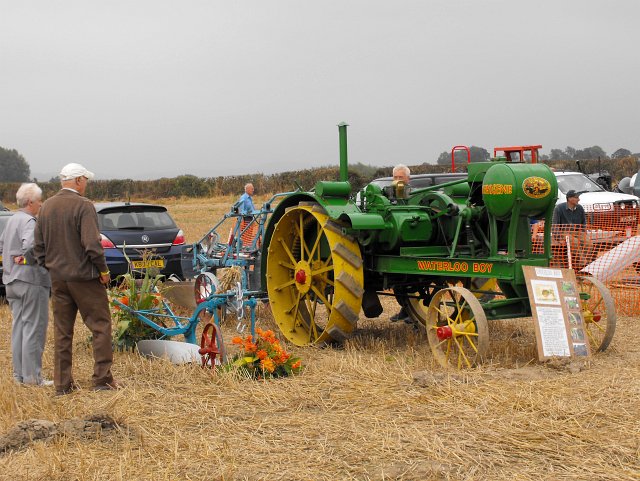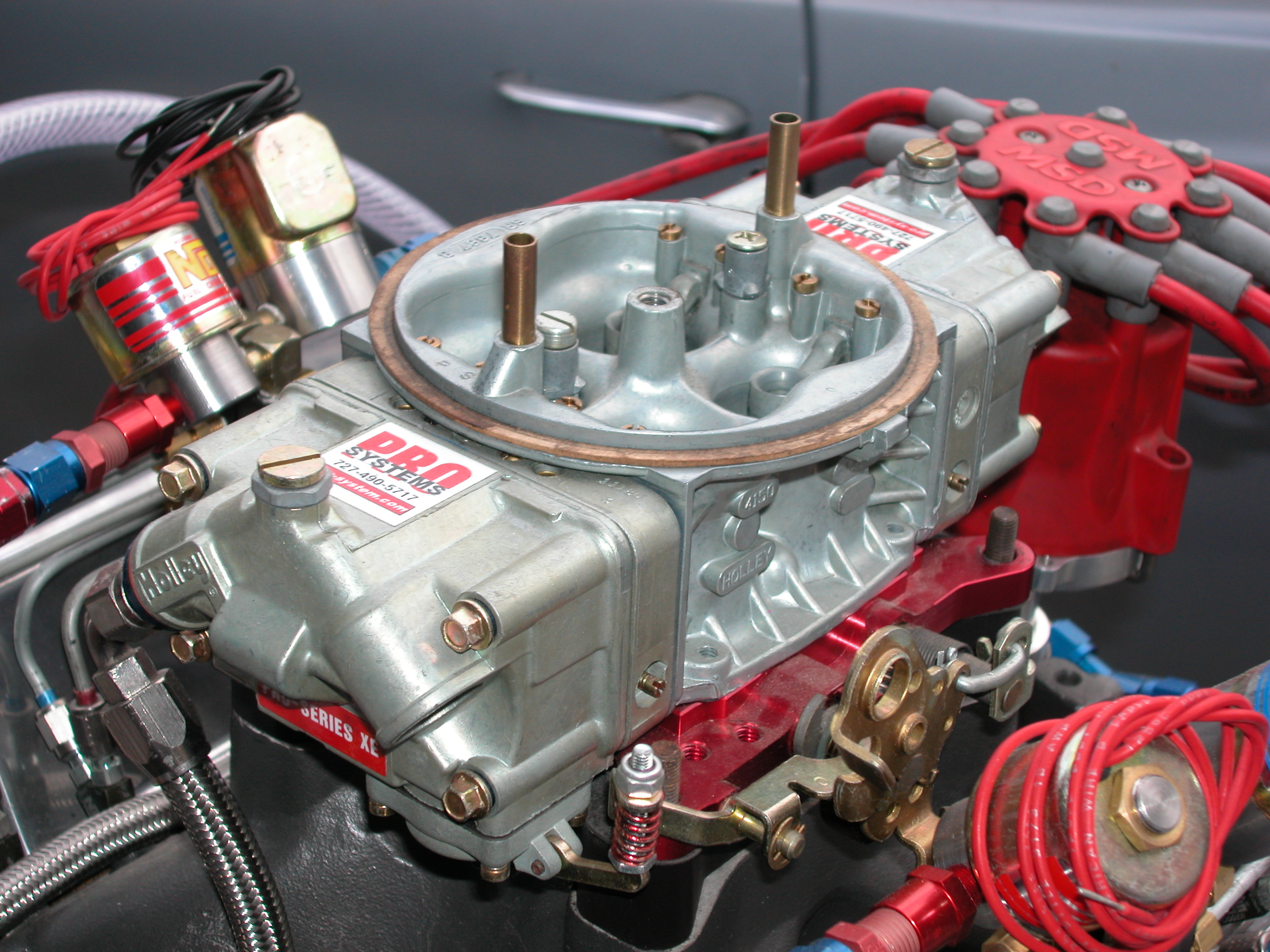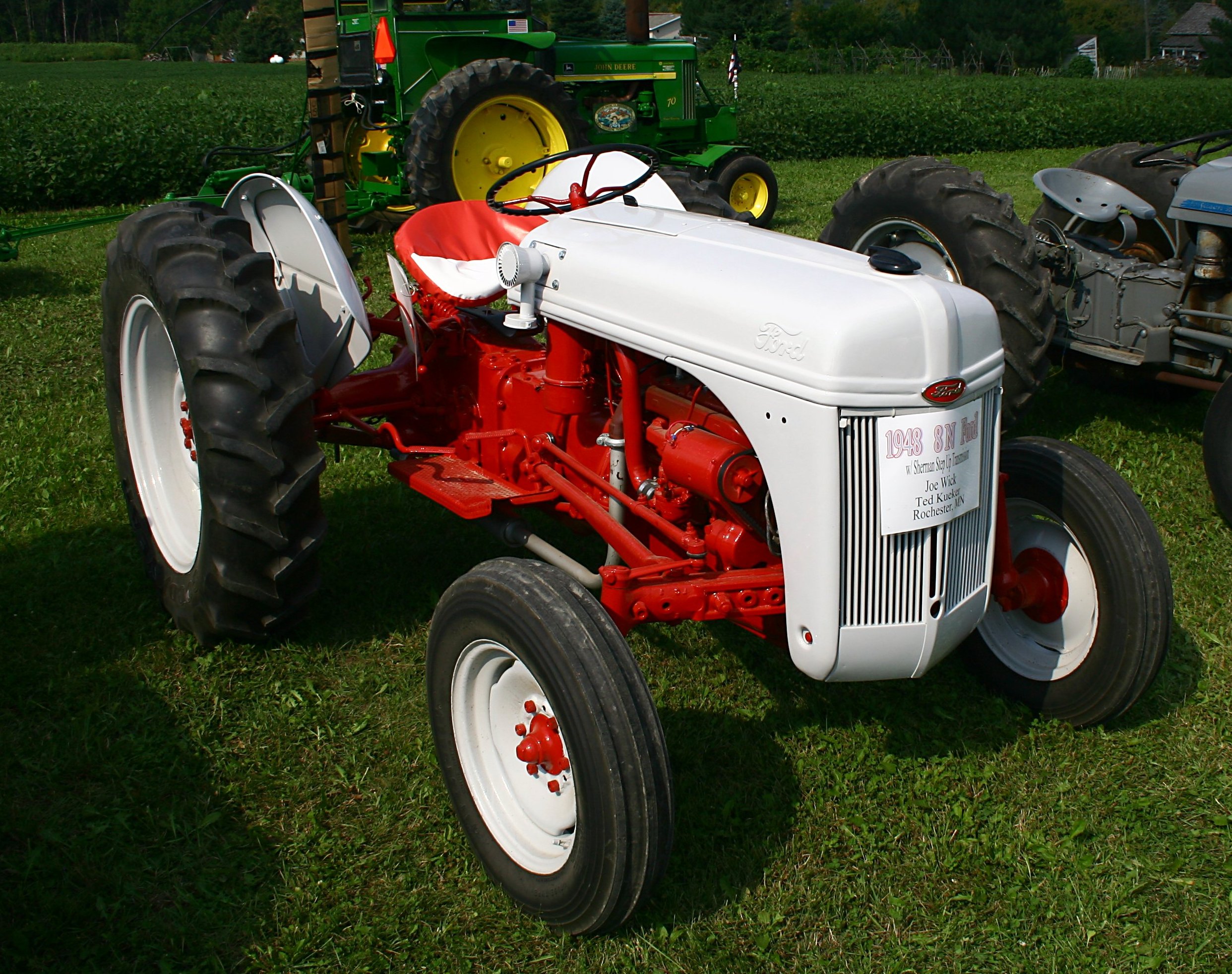|
Petrol-paraffin
A petrol-paraffin engine, TVO engine (United Kingdom) or gasoline-kerosene engine ( North America) is an old-fashioned type of dual-fuel internal combustion engine with spark-ignition, designed to start on petrol (gasoline) and then to switch to run on paraffin (kerosene) once the engine is warm. The grade of paraffin used is known as tractor vaporising oil in the UK. Advantages The advantages of the petrol-paraffin engine are that (compared to petrol): # Paraffin can be cheaper and/or more readily available # Being less flammable, paraffin is safer to store # Being less volatile, paraffin is less likely to go "stale" in the tank. Some of these advantages have become illusory since paraffin, once widely available as a cheap fuel, has become rarer and more expensive, particularly in developed countries. Also, while some older vessels still use marine petrol-paraffin engines, most inboard marine engines now tend to be diesels. Equipment A petrol-paraffin engine differs from a s ... [...More Info...] [...Related Items...] OR: [Wikipedia] [Google] [Baidu] |
Tractor Vaporising Oil
Tractor vaporising oil (TVO) is a fuel for petrol-paraffin engines. It is seldom made or used today. In the United Kingdom and Australia, after the Second World War, it was commonly used for tractors until diesel engines became commonplace, especially from the 1960s onward. In Australian English it was known as power kerosene. History TVO existed for at least fifteen years before it became widely used. A 1920 publication mentions it as a product of British Petroleum. But it was not until the late 1930s that it first became widely used. The post war Ferguson TE20 tractor, a carefully researched and near-ideal tractor for use on British farms, was designed around a petrol (gasoline) engine, the Standard inline-four. Although there was a campaign for the reintroduction of agricultural Road Duty (tax)-free petrol, which had been curtailed during the war, this was not forthcoming. Perkins Engines supplied some conversions into diesel engines which could use untaxed red diesel. ... [...More Info...] [...Related Items...] OR: [Wikipedia] [Google] [Baidu] |
Carburetor
A carburetor (also spelled carburettor) is a device used by an internal combustion engine to control and mix air and fuel entering the engine. The primary method of adding fuel to the intake air is through the venturi tube in the main metering circuit, however various other components are also used to provide extra fuel or air in specific circumstances. Since the 1990s, carburetors have been largely replaced by fuel injection for cars and trucks, however carburetors are still used by some small engines (e.g. lawnmowers, generators and concrete mixers) and motorcycles. Diesel engines have always used fuel injection instead of carburetors. Etymology The name "carburetor" is derived from the verb ''carburet'', which means "to combine with carbon," or in particular, "to enrich a gas by combining it with carbon or hydrocarbons." Thus a carburetor mixes intake air with hydrocarbon-based fuel, such as petrol or autogas (LPG). The name is spelled "carburetor" in American Eng ... [...More Info...] [...Related Items...] OR: [Wikipedia] [Google] [Baidu] |
Tractor
A tractor is an engineering vehicle specifically designed to deliver a high tractive effort (or torque) at slow speeds, for the purposes of hauling a trailer or machinery such as that used in agriculture, mining or construction. Most commonly, the term is used to describe a farm vehicle that provides the power and traction to mechanize agricultural tasks, especially (and originally) tillage, and now many more. Agricultural implements may be towed behind or mounted on the tractor, and the tractor may also provide a source of power if the implement is mechanised. Etymology The word ''tractor'' was taken from Latin, being the agent noun of ''trahere'' "to pull". The first recorded use of the word meaning "an engine or vehicle for pulling wagons or plows" occurred in 1896, from the earlier term "traction motor" (1859). National variations In the UK, Ireland, Australia, India, Spain, Argentina, Slovenia, Serbia, Croatia, the Netherlands, and Germany, the word "tractor" u ... [...More Info...] [...Related Items...] OR: [Wikipedia] [Google] [Baidu] |
Paraffin Tank On Waterloo Boy Tractor - Geograph
Paraffin may refer to: Substances * Paraffin wax, a white or colorless soft solid that is used as a lubricant and for other applications * Liquid paraffin (drug), a very highly refined mineral oil used in cosmetics and for medical purposes * Alkane, a saturated hydrocarbon * Kerosene, a fuel that is also known as paraffin * Mineral oil, any of various colorless, odorless, light mixtures of alkanes in the C15 to C40 range from a non-vegetable (mineral) source, particularly a distillate of petroleum * Petroleum jelly, also called soft paraffin * Tractor vaporizing oil, a fuel for petrol-paraffin engines Other uses * "Paraffin" (song) the first single off the 1995 album ''Salt Peter'' by Ruby * Paraffin - WiX command-line tool, a free software toolset that builds Windows Installer (MSI) packages from an XML document * ''Paraffin'' (album) See also * Kerosene (other) * Paraffin oil (other) * Paraffin test Gunshot residue (GSR), also known as cartridge discharge ... [...More Info...] [...Related Items...] OR: [Wikipedia] [Google] [Baidu] |
Carburettor
A carburetor (also spelled carburettor) is a device used by an internal combustion engine to control and mix air and fuel entering the engine. The primary method of adding fuel to the intake air is through the venturi tube in the main metering circuit, however various other components are also used to provide extra fuel or air in specific circumstances. Since the 1990s, carburetors have been largely replaced by fuel injection for cars and trucks, however carburetors are still used by some small engines (e.g. lawnmowers, generators and concrete mixers) and motorcycles. Diesel engines have always used fuel injection instead of carburetors. Etymology The name "carburetor" is derived from the verb ''carburet'', which means "to combine with carbon," or in particular, "to enrich a gas by combining it with carbon or hydrocarbons." Thus a carburetor mixes intake air with hydrocarbon-based fuel, such as petrol or autogas (LPG). The name is spelled "carburetor" in American Engli ... [...More Info...] [...Related Items...] OR: [Wikipedia] [Google] [Baidu] |
Thomas Tilling
The Tilling Group was one of two conglomerates that controlled almost all of the major bus operators in the United Kingdom between World Wars I and II and until nationalisation in 1948. Tilling, together with the other conglomerate, British Electric Traction (BET), became the main constituents of the country's nationalised bus industry in the late 1960s and was sufficiently well known to have entered popular culture as part of London's Cockney rhyming slang (Thomas Tilling = shilling). The company continued as an industrial conglomerate after nationalisation of its bus interests; it was acquired by BTR plc in 1983. Origins The company traces its origins to 1846, when Thomas Tilling started in business. Tilling was born in 1825 at Gutter's Hedge Farm, Hendon, Middlesex, of parents who had moved there from Gloucestershire. In 1846, at the age of 21, he went into the transport business in London as a jobmaster in Walworth using a horse and carriage which cost him £30. ... [...More Info...] [...Related Items...] OR: [Wikipedia] [Google] [Baidu] |
Daimler-Motoren-Gesellschaft
Daimler-Motoren-Gesellschaft (abbreviated as DMG, also known as ''Daimler Motors Corporation'') was a German engineering company and later automobile manufacturer, in operation from 1890 until 1926. Founded by Gottlieb Daimler (1834–1900) and Wilhelm Maybach (1846–1929), it was based first in Cannstatt (today Bad Cannstatt, a city district of Stuttgart). Daimler died in 1900, and their business moved in 1903 to Stuttgart- Untertürkheim after the original factory was destroyed by fire, and again to Berlin in 1922. Other factories were located in Marienfelde (near Berlin) and Sindelfingen (next to Stuttgart). The enterprise began to produce petrol engines but after the success of a small number of race cars built on contract by Wilhelm Maybach for Emil Jellinek, it began to produce the ''Mercedes'' model of 1902. After this automobile production expanded to become ''DMG'''s main product, and it built several models. Because of the post World War One German economic crisi ... [...More Info...] [...Related Items...] OR: [Wikipedia] [Google] [Baidu] |
Mercedes-Benz Buses
Mercedes-Benz has been producing buses since 1895 in Mannheim in Germany. Since 1995 Mercedes-Benz buses and coaches is a brand of EvoBus GmbH, a wholly owned subsidiary of Daimler Truck. Heritage The world's first motorised bus was built in Germany by Karl Benz in 1895, some years before Gottlieb Daimler also started to build and sell buses in Germany as well. By 1898 both Karl Benz and Gottlieb Daimler, then rivals, were exporting their buses to Wales and England. Soon Daimler products were sold in the British Empire in a partnership with the British company Milnes. Milnes-Daimler developed a double-decker in 1902 and provided a bus for the first motorised bus service in the United Kingdom the following year. Though the company met success in selling buses throughout the British Empire, the partnership between Daimler and Milnes had to be undone due to the First World War. Due to economic hardships in the early 1900s, Daimler Motoren Gesellschaft and Benz & Cie. merged i ... [...More Info...] [...Related Items...] OR: [Wikipedia] [Google] [Baidu] |
Vaporization
Vaporization (or vaporisation) of an element or compound is a phase transition from the liquid phase to vapor. There are two types of vaporization: evaporation and boiling. Evaporation is a surface phenomenon, whereas boiling is a bulk phenomenon. Evaporation is a phase transition from the liquid phase to vapor (a state of substance below critical temperature) that occurs at temperatures below the Boiling point, boiling temperature at a given pressure. Evaporation occurs ''on the surface''. Evaporation only occurs when the partial pressure of vapor of a substance is less than the Equilibrium Vapor Pressure, equilibrium vapor pressure. For example, due to constantly decreasing pressures, vapor pumped out of a solution will eventually leave behind a cryogenic liquid. Boiling is also a phase transition from the liquid phase to gas phase, but boiling is the formation of vapor as bubbles of vapor ''below the surface'' of the liquid. Boiling occurs when the equilibrium vapor pressure o ... [...More Info...] [...Related Items...] OR: [Wikipedia] [Google] [Baidu] |
Stationary Engine
A stationary engine is an engine whose framework does not move. They are used to drive immobile equipment, such as pumps, generators, mills or factory machinery, or cable cars. The term usually refers to large immobile reciprocating engines, principally stationary steam engines and, to some extent, stationary internal combustion engines. Other large immobile power sources, such as steam turbines, gas turbines, and large electric motors, are categorized separately. Stationary engines were once widespread in the era when each factory or mill generated its own power, and power transmission was mechanical (via line shafts, belts, gear trains, and clutches). Applications for stationary engines have declined since electrification has become widespread; most industrial uses today draw electricity from an electrical grid and distribute it to various individual electric motors instead. Engines that operate in one place, but can be moved to another place for later operation, are cal ... [...More Info...] [...Related Items...] OR: [Wikipedia] [Google] [Baidu] |
Locomotive
A locomotive or engine is a rail transport vehicle that provides the motive power for a train. If a locomotive is capable of carrying a payload, it is usually rather referred to as a multiple unit, motor coach, railcar or power car; the use of these self-propelled vehicles is increasingly common for passenger trains, but rare for freight (see CargoSprinter). Traditionally, locomotives pulled trains from the front. However, push-pull operation has become common, where the train may have a locomotive (or locomotives) at the front, at the rear, or at each end. Most recently railroads have begun adopting DPU or distributed power. The front may have one or two locomotives followed by a mid-train locomotive that is controlled remotely from the lead unit. __TOC__ Etymology The word ''locomotive'' originates from the Latin 'from a place', ablative of 'place', and the Medieval Latin 'causing motion', and is a shortened form of the term ''locomotive engine'', which was ... [...More Info...] [...Related Items...] OR: [Wikipedia] [Google] [Baidu] |
Light Railway
A light railway is a railway built at lower costs and to lower standards than typical "heavy rail": it uses lighter-weight track, and may have more steep gradients and tight curves to reduce civil engineering costs. These lighter standards allow lower costs of operation, at the price of lower vehicle capacity. Narrow gauge thumb , right , 250px , Restored Kühlungsborn.html" ;"title="Molli railway at Kühlungsborn">Molli railway at Kühlungsborn, Mecklenburg, Germany () In countries where a single standard gauge is dominant, the term light railway does not imply a narrow gauge railway. Most narrow gauge railways operate as light railways, but not all light railways need be narrow gauge. After Spooner's development of steam haulage for narrow gauge railways, the prevailing view was that the gauge should be tailored according to the traffic: "''The nearer the machine is apportioned to the work it has to do the cheaper will that work be done.''" From the 1890s, it was re ... [...More Info...] [...Related Items...] OR: [Wikipedia] [Google] [Baidu] |






